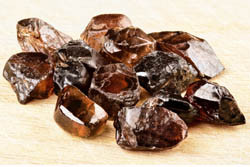A window to the newborn Earth
Our current knowledge of the nature and origin of the earliest crust on Earth comes mainly from studies of the mineral zircon (also known as zirconium silicate). Zircon mineral grains are preserved in much younger rocks and represent a time capsule of what the Earth was like during the Hadean Eon. The Hadean was Earth's first geological period, spanning 400 million years, long before life began, when the planet was still largely molten and highly volcanic. Everything we know about the period comes from these zircon mineral grains. To discover more, the EU funded the project 'The Earth in transition: From earliest crust to earliest preserved rocks' (HADEAN). The study aimed to compare isotope information about the Hadean known from zircons with data now available from our planet's oldest rocks. It revealed the nature of the Earth's crust at the time and helped document the changes from Hadean conditions. This information also accounted for why so few Hadean rocks survive. A range of analyses were conducted (ion, isotope, electron microscope and synchrotron) on samples obtained from extremely old rocks at various locations. The most significant results concern Antarctic samples, which exhibited a previously unseen patchy distribution of lead. Results indicated an ancient redistribution of lead and were not relics of ancient zircons as previously believed. A scanning ion imaging tool provided a new approach for testing the validity of age calculations based on samples with complex histories. The results were significant for geochronologists, who determine the age of rocks using signatures inherent in the rocks themselves. The outcome of the project will be a database of isotopic information for all known locations of old rocks on Earth. Together with information from other work it will be possible to evaluate and propose new theories for what happened during the Hadean Eon. Studies of the Hadean environment will have major implications for understanding the potential development of life on Earth and the habitability of the planet during this time. Therefore, the project's results will be of great interest to not only geologists but also biologists. Further results are currently being assessed and papers prepared for publication, or under review in leading scientific journals.







